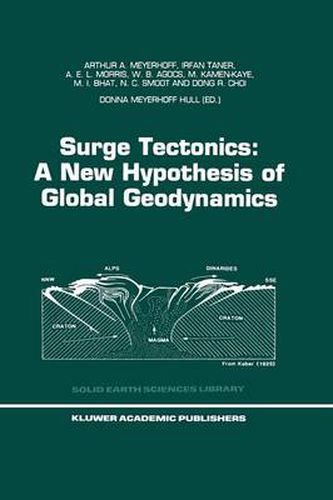Readings Newsletter
Become a Readings Member to make your shopping experience even easier.
Sign in or sign up for free!
You’re not far away from qualifying for FREE standard shipping within Australia
You’ve qualified for FREE standard shipping within Australia
The cart is loading…






This title is printed to order. This book may have been self-published. If so, we cannot guarantee the quality of the content. In the main most books will have gone through the editing process however some may not. We therefore suggest that you be aware of this before ordering this book. If in doubt check either the author or publisher’s details as we are unable to accept any returns unless they are faulty. Please contact us if you have any questions.
TECTONlCS AND PHYSICS Geology, although rooted in the laws of physics, rarely has been taught in a manner designed to stress the relations between the laws and theorems of physics and the postulates of geology. The same is true of geophysics, whose specialties (seismology, gravimetIy, magnetics, magnetotellurics) deal only with the laws that govern them, and not with those that govern geology’s postulates. The branch of geology and geophysics called tectonophysics is not a formalized discipline or subdiscipline, and, therefore, has no formal laws or theorems of its own. Although many recent books claim to be textbooks in tectonophysics, they are not; they are books designed to explain one hypothesis, just as the present book is designed to explain one hypothesis. The textbook that comes closest to being a textbook of tectonophysics is Peter 1. Wyllie’s (1971) book, The Dynamic Earth. Teachers, students, and practitioners of geology since the very beginning of earth science teaching have avoided the development of a rigorous (but not rigid) scientific approach to tectonics, largely because we earth scientists have not fully understood the origin of the features with which we are dealing. This fact is not at all surprising when one considers that the database for hypotheses and theories of tectonics, particularly before 1960, has been limited to a small part of the exposed land area on the Earth’s surface.
$9.00 standard shipping within Australia
FREE standard shipping within Australia for orders over $100.00
Express & International shipping calculated at checkout
This title is printed to order. This book may have been self-published. If so, we cannot guarantee the quality of the content. In the main most books will have gone through the editing process however some may not. We therefore suggest that you be aware of this before ordering this book. If in doubt check either the author or publisher’s details as we are unable to accept any returns unless they are faulty. Please contact us if you have any questions.
TECTONlCS AND PHYSICS Geology, although rooted in the laws of physics, rarely has been taught in a manner designed to stress the relations between the laws and theorems of physics and the postulates of geology. The same is true of geophysics, whose specialties (seismology, gravimetIy, magnetics, magnetotellurics) deal only with the laws that govern them, and not with those that govern geology’s postulates. The branch of geology and geophysics called tectonophysics is not a formalized discipline or subdiscipline, and, therefore, has no formal laws or theorems of its own. Although many recent books claim to be textbooks in tectonophysics, they are not; they are books designed to explain one hypothesis, just as the present book is designed to explain one hypothesis. The textbook that comes closest to being a textbook of tectonophysics is Peter 1. Wyllie’s (1971) book, The Dynamic Earth. Teachers, students, and practitioners of geology since the very beginning of earth science teaching have avoided the development of a rigorous (but not rigid) scientific approach to tectonics, largely because we earth scientists have not fully understood the origin of the features with which we are dealing. This fact is not at all surprising when one considers that the database for hypotheses and theories of tectonics, particularly before 1960, has been limited to a small part of the exposed land area on the Earth’s surface.